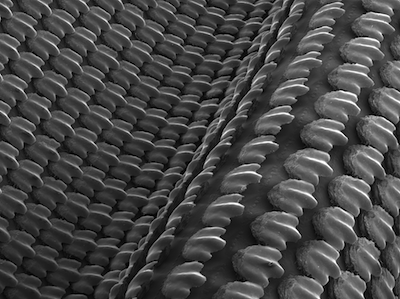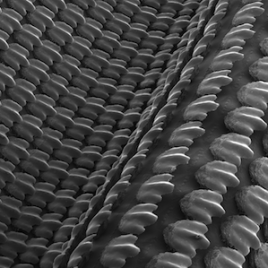
This 3D model of artificial shark skin shows rigid denticles attached to a flexible membrane. By studying and optimizing this model, scientists could learn to create faster wetsuits and other swimming gear. (Photo credit: James Weaver.)
A new ultra-realistic 3D model of shark skin could help humans mimic its speed-boosting properties. Researchers used micro-CT scanners to create a detailed computer model of the skin of a mako shark – which is covered in tooth-like scales called denticles – and then printed their own version using a 3D printer.
Experiments showed that the unique design boosted swimming speed by up to 6.6 per cent while reducing energy cost. The model could allow scientists to further optimize the design for use in wetsuits or other swimming gear.
Original research paper published in the the Journal of Experimental Biology on May 14, 2014.
Names and affiliations of selected authors

